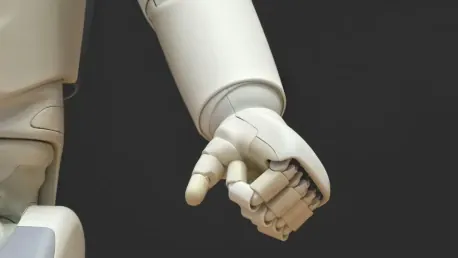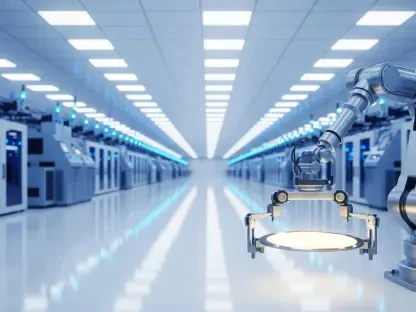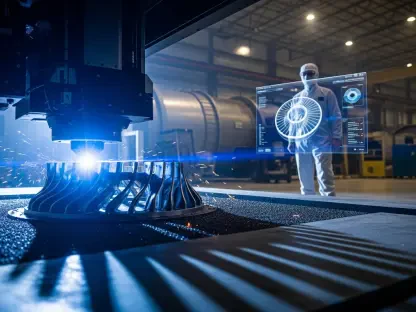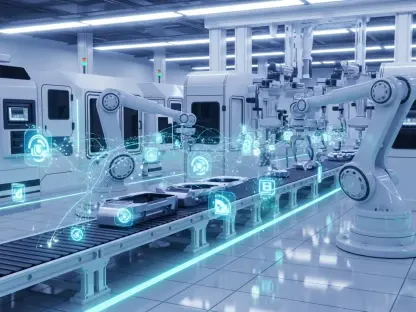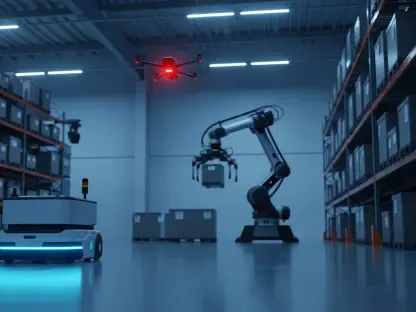Amid escalating labor shortages, China’s manufacturing industry is undergoing a significant transformation driven by the integration of humanoid robots. These advanced robots, epitomized by the G1 humanoid from Unitree Robotics, are redefining efficiency and productivity within the sector. This emerging revolution in automation is comparable to past technological leaps, such as the widespread adoption of computers and smartphones, which fundamentally altered various aspects of everyday life and business operations. The rise of humanoid robots is not just a testament to technological progress but also a response to economic necessities, particularly in a country facing a dwindling labor force.
Humanoid robots have demonstrated their capabilities at various high-profile events, such as the World Robot Conference in Beijing, where Unitree Robotics’ silver humanoid wowed audiences with its dancing prowess. However, the potential of these robots extends far beyond entertainment. In industrial settings like Audi FAW’s production facility, humanoid robots are seamlessly transporting heavy auto parts, showcasing their versatility and operational efficacy. Their dual function in both performing arts and industrial applications highlights their wide-ranging potential and reinforces the belief that humanoid robots are poised to become an integral part of the manufacturing landscape.
Economic Viability and Advanced Features
The enthusiasm for humanoid robots arises from their innovative functionalities and their economic viability. A key example is the recently updated G1 humanoid robot, which incorporates high-torque joints and 360-degree cameras, enabling it to perform complex maneuvers such as stationary backflips and navigate challenging environments. Priced at approximately 99,000 yuan ($13,910), it is significantly more accessible than other options like Tesla’s Optimus, which is projected to cost around $25,000. This competitive pricing is expected to accelerate the adoption rates of humanoid robots and further integrate them into various sectors beyond just manufacturing.
Experts predict substantial market expansion for China’s humanoid robot industry. With projected revenue of $2.9 billion in 2024, soaring to around $46.31 billion by 2031, the industry is on the brink of explosive growth. The rapid advancements and increasing integration of humanoid robots into the economy underscore the anticipated rapid growth. The compound annual growth rate of 48.6 percent serves as a testament to the significant inroads that these technological marvels are making, not just in terms of revenue but also in transforming how industries operate.
Industrial Applications and Versatility
Looking ahead, humanoid robots are expected to tackle more complex tasks by 2027, including assembly operations. This marks a pivotal shift in manufacturing processes, where robots initially used for simple repetitive tasks will be undertaking intricate activities that demand precision and adaptability. Industries such as computers, communications, and consumer electronics (3C) stand to benefit immensely from these advancements, seeing improvements in production capacities, quality control, and overall operational efficiencies.
The impact of humanoid robots is not restricted solely to heavy industries. They are also making their presence felt in more nuanced roles, assisting with inventory management, conducting quality checks, and even interacting with human workers to create more harmonious and efficient workflows. Such versatility in applications further highlights the transformative potential of these robots in reshaping China’s manufacturing landscape. By integrating humanoid robots into diverse operational roles, manufacturers are not only sustaining productivity but also carving new paths for growth and innovation in a competitive global market.
Government Support and Strategic Plans
The Chinese government’s commitment to advancing humanoid robotic technology is evident through the strategic plans devised by the Ministry of Industry and Information Technology. These plans aim to establish initial innovation systems by 2025 and secure a robust industry and supply chain by 2027. The focus is on effectively embedding humanoid robots and related technologies into the real economy. This is not just about meeting current needs but also about future-proofing the industry for the demands of tomorrow.
Government support plays a crucial role in this transformation, bolstering research initiatives, nurturing innovation incubators, and promoting localized development for diversified robotic applications. Jin Zhuanglong, the current minister of industry and information technology, underscores initiatives to foster a competitive edge in the future of robotics and AI industries. Leveraging China’s advantageous conditions in terms of timing, location, and talent, these plans are set to give the country a significant lead in the global race for robotic innovation.
Integration of AI and Language Models
One of the most transformative aspects of humanoid robots is their integration with advanced AI language models, akin to ChatGPT. Historically, robotic systems have struggled to understand and execute human instructions due to limited programming capabilities. However, these barriers are rapidly dissolving with the advent of AI-powered language comprehension, allowing robots to interpret and interact with human language effectively. This evolution, often referred to as “embodied intelligence,” is paving the way for more intuitive and intelligent robotic systems.
This integration ensures that humanoid robots are not merely mechanical laborers but also intelligent entities capable of understanding complex tasks and providing real-time responses to dynamic manufacturing environments. By incorporating advanced AI, these robots can better adapt to the needs of the industry, making real-time adjustments and thereby enhancing efficiency and productivity. This capability transforms them into indispensable tools that can significantly elevate operational standards and production outcomes.
Future Vision and Expert Perspectives
Industry leaders and players are strongly optimistic about the future trajectory of humanoid robots. Wang Xingxing, the CEO and founder of Unitree Robotics, envisions humanoid robots becoming a common sight across various sectors within the next five years. Xingxing likens this transformative period to an ‘iPhone moment,’ where these robots will become integral and ubiquitous in many operational functions, fundamentally altering how tasks are performed across various industries.
China’s rapid adoption and advancement in the robotics sphere are reflected in its status as the largest operational robot market. Over the past decade, the number of industrial robot installations has surged from 60,000 to approximately 290,000. This staggering growth highlights China’s aggressive push towards automation and its commitment to integrating advanced robotics into manufacturing processes. Marina Bill, president of the International Federation of Robotics, has emphasized this unprecedented growth, positioning China at the forefront of the global robotic markets and influencing future trends and technologies.
Market Growth and Technological Advancements
China’s status as the world’s largest operational robot market underscores its aggressive push towards automation and advanced technology integration. This has been vividly demonstrated by the remarkable surge in industrial robot installations over the past decade, highlighting the country’s unwavering commitment to incorporating cutting-edge robotics into its manufacturing processes. This ambitious endeavor has not only led to substantial gains in productivity but has also positioned China as a formidable leader in the global robotic market, setting trends and influencing technological advancements worldwide.
Humanoid robots, enhanced by advanced AI, competitive pricing, and robust governmental support, are poised for significant growth within China’s manufacturing industry. As these robots become increasingly sophisticated, their ability to perform complex and varied industrial tasks will reshape manufacturing landscapes. New benchmarks in efficiency, innovation, and technological integration will be established, setting a high standard for future developments. As these advancements continue, they will not only optimize existing operations but also open up new avenues for industry expansion and innovation, driving the sector into a new era of productivity and technological prowess.
Conclusion
Amid worsening labor shortages, China’s manufacturing sector is experiencing a transformative shift propelled by the integration of humanoid robots. These sophisticated machines, like Unitree Robotics’ G1 humanoid, are redefining efficiency and productivity. This shift in automation is akin to historical technological advances like the adoption of computers and smartphones, which revolutionized various facets of daily life and business operations. The emergence of humanoid robots signifies not only technological progress but also an economic necessity for a country grappling with a shrinking labor force.
Showcasing their capabilities at prestigious events like the World Robot Conference in Beijing, Unitree Robotics’ silver humanoid impressed audiences with its dancing skills. Yet, their value extends well beyond entertainment. In industrial applications, such as at Audi FAW’s production facility, humanoid robots are adeptly managing heavy auto parts, proving their versatility and efficacy. Their dual capabilities in performing arts and industrial settings underline their vast potential and solidify the belief that humanoid robots are set to become a cornerstone of the manufacturing industry.
